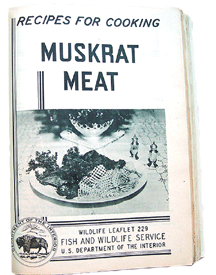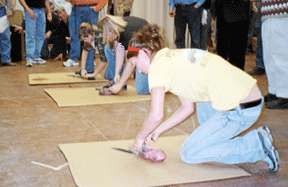
|
Volume XVII, Issue 12 - March 19 - March 25, 2009
|
|
Columns Reviews |
Smothered Muskrat
|
The Other White Meat
In places along Chesapeake Bay,
muskrat is still treasured for more than its pelt
|
|
With the coming of spring, Marylanders and muskrats go their separate ways. But every year from November to March, Marylanders — at least some of us — hunt, trap and skin the furry rodents, also known as marsh rabbits.
The historic pursuit has its origins in taste and style. Before grocery stores, the flesh of the muskrat — said to taste like duck or rabbit — was more appealing. And the creature has long been valued for its soft, waterproof fur, which was dyed and sold in Europe as Hudson Seal.
The tradition continues into our times. “Muskrat trapping is culturally and economically important in many regions in Maryland,” reports Robert Colona of Maryland Department of Natural Resources. So important that this year’s harvest season was extended by a week to March 21 in 17 of Maryland’s 23 counties after ice and snow made the wetland trapping grounds inaccessible.
Trapping also controls the population of the eager beaver-cousins.
In recent years, Marylanders have redefined Muskrat Love — the 1970s hit song by The Captain and Tennille. In outdoor culture, a beauty contestant can win a man’s heart by showing some muskrat skin.
Contestants in Maryland’s Miss Outdoors Pageant — part of Dorchester County’s 64-year-old Annual National Outdoor Show — nowadays show their talent by skinning muskrats.
You’ve missed your chance this year to see a beauty contestant get under a rodent’s skin. But you’ve still got a few days to sample the taste of the season’s last muskrats. Catholics might be especially interested: They can eat muskrat meat during Lent, as the Church defines the creature as aquatic.
Buy yours at Bob Evans Seafood in Churchton or Lexington Market in Baltimore.

